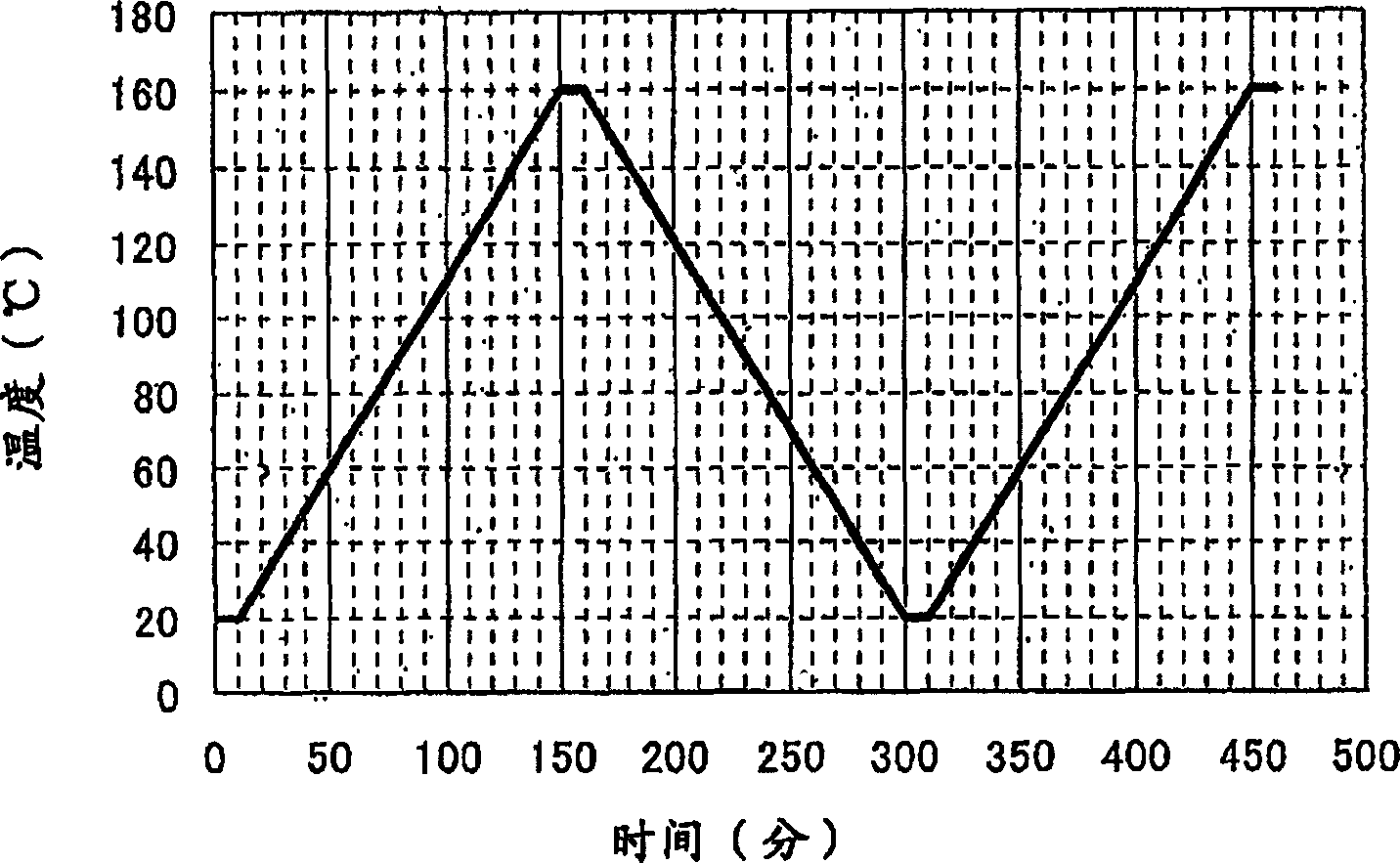Toner and process for producing toner
A technology of toner and toner particles, applied in the field of toner, which can solve the problems of preservation, fluidity, chargeability, image deficiency, lowering of toner glass transition temperature, etc., and achieve storage stability Excellent, excellent development durability
- Summary
- Abstract
- Description
- Claims
- Application Information
AI Technical Summary
Problems solved by technology
Method used
Image
Examples
preparation example Construction
[0212]As the preparation method of the toner of the present invention, the following methods can be cited: using the suspension polymerization method described in JP-A-36-10231, JP-A-59-53856, JP-A-59-61842, directly The method of producing toner is used to produce toner; it is produced by emulsion polymerization represented by the soap-free polymerization method that directly polymerizes monomers to produce toner in the presence of a soluble water-soluble polymerization initiator into toner; using surface polymerization method such as microcapsule preparation method, in-site polymerization method to make toner; using coagulation method to make toner; using JP-A-62-106473 bulletin or JP-A-63-186253 The associative polymerization method disclosed in the gazette is to aggregate at least one or more particles to obtain particles with a desired particle size; toner is produced by dispersion polymerization characterized by monodispersion; toner is produced by making necessary The r...
preparation example 1
[0252] In a 4-necked bottle equipped with Dimro reflux device and Dean-Stark water separator, add 1900 parts by mass of benzene, 1400 parts by mass of myristic acid (C 14 h 28 o 2 ), palmitic acid (C 16 h 32 o 2 ), stearic acid (C 18 h 36 o 2 ), arachidic acid (C 20 h 40 o 2 ), behenic acid (C 20 h 40 o 2 ) mixture (carboxylic acid component), 1300 parts by mass by butanol (C 4 h 10 O), myristyl alcohol (C 14 h 30 O), palmityl alcohol (C 16 h 34 O), stearyl alcohol (C 18 h 38 O), peanut alcohol (C 20 h 42 O) The mixture composed of 130 parts by mass of p-toluenesulfonic acid was stirred and refluxed for 6 hours, followed by azeotropic distillation with a water separator. After washing well with sodium bicarbonate, it was dried to remove benzene. The product was recrystallized with benzene, washed and refined to obtain ester wax 1.
preparation example 2~4
[0254] Ester waxes 2-4 were prepared similarly to the preparation example 1 of ester wax except having changed the kind and quantity of a carboxylic acid component and an alcohol component.
[0255]
[0256]
PUM
 Login to View More
Login to View More Abstract
Description
Claims
Application Information
 Login to View More
Login to View More - R&D
- Intellectual Property
- Life Sciences
- Materials
- Tech Scout
- Unparalleled Data Quality
- Higher Quality Content
- 60% Fewer Hallucinations
Browse by: Latest US Patents, China's latest patents, Technical Efficacy Thesaurus, Application Domain, Technology Topic, Popular Technical Reports.
© 2025 PatSnap. All rights reserved.Legal|Privacy policy|Modern Slavery Act Transparency Statement|Sitemap|About US| Contact US: help@patsnap.com



